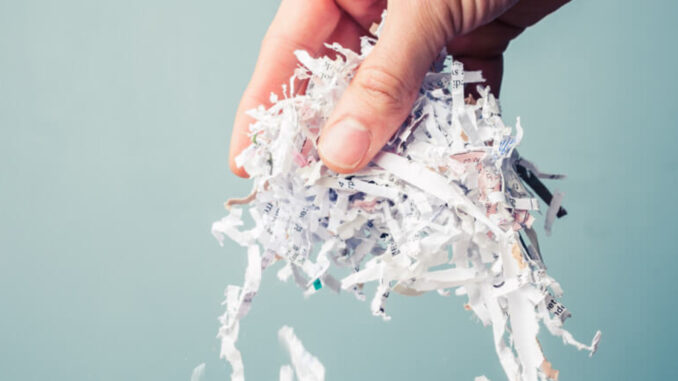
Document disposal and destruction are critical processes for organizations to ensure the protection of sensitive information and compliance with data privacy regulations.
Here’s a comprehensive guide on document disposal and destruction:








1. **Identify Sensitive Information:**
– Determine what types of information need to be securely disposed of, such as financial records, personal data, intellectual property, etc.
2. **Develop a Document Retention Policy:**
– Establish guidelines for how long certain types of documents should be retained before disposal, considering legal requirements and operational needs.
3. **Classify Documents:**
– Classify documents based on their sensitivity level to determine the appropriate disposal methods.
4. **Secure Storage:**
– Store sensitive documents securely until they are ready for disposal to prevent unauthorized access or loss.
5. **Choose Disposal Methods:**
– **Shredding:** Shred paper documents using cross-cut or confetti shredders to make them unreadable.
– **Pulping:** For large quantities of paper, pulping involves breaking down paper into a pulp-like substance to ensure complete destruction.
– **Incineration:** Burning documents at high temperatures to ensure complete destruction.
– **Electronic Data Wiping:** Use software tools to securely erase data from electronic devices like hard drives and SSDs.
– **Degaussing:** Use degaussers to destroy data on magnetic media such as tapes or floppy disks by altering the magnetic fields.
– **Physical Destruction:** For physical objects like CDs, DVDs, or USB drives, physically destroy them using specialized equipment.
6. **Document Destruction Logs:**
– Maintain detailed records of document destruction activities, including dates, types of documents destroyed, and methods used.
7. **Compliance with Regulations:**
– Ensure compliance with relevant data protection regulations such as GDPR, HIPAA, or CCPA, which may have specific requirements for document disposal and destruction.
8. **Employee Training:**
– Train employees on the proper procedures for document disposal and destruction to minimize the risk of accidental data breaches.
9. **Regular Audits:**
– Conduct periodic audits to ensure that document disposal and destruction processes are being followed correctly and identify any areas for improvement.
10. **Environmental Considerations:**
– Consider the environmental impact of document disposal methods and choose options that are eco-friendly where possible.
11. **Outsource if Necessary:**
– If managing document disposal in-house is impractical, consider outsourcing to reputable third-party providers specializing in secure document destruction services.
## 12. **Continuous Improvement:**
– Regularly review and update document disposal and destruction processes to adapt to changes in regulations, technology, or business practices.
By following these steps, organizations can effectively manage document disposal and destruction, safeguarding sensitive information and maintaining compliance with relevant regulations.

Leave a Reply